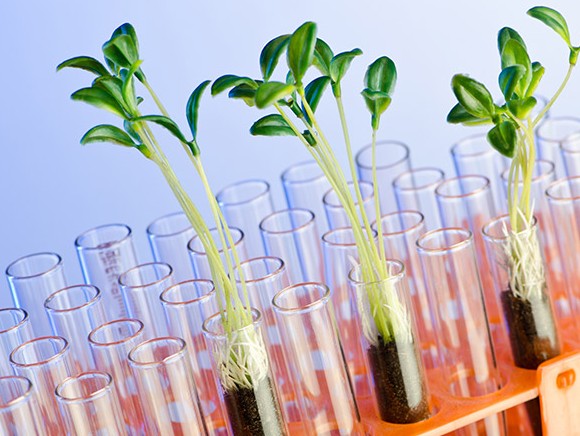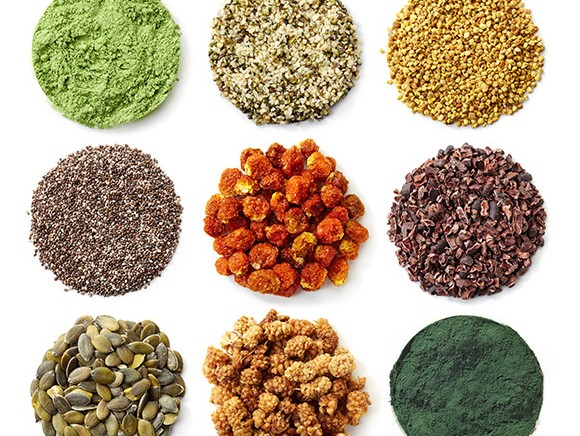
2018 is becoming a dynamic year: technology will make big changes in the food sector. Cost reduction, decreasing environmental impact and addressing the problem of the global food system are significant stimuli for these changes.
The same questions come into play at all the links in the chain: how can I reduce the environmental impact of our food production? Is it possible to do our work (be it producing, processing, transport or storage) with less water, energy, resources and space? We are seeing food production shift from the countryside and the factory to the laboratory (a somewhat divisive trend opposed by the "pure, natural and local" movement). Food flats and urban agriculture are on the rise. Vegetables are being grown with exactly the right amount of water, with little manure and insecticides, and under an artificial sun. Laboratories are working on the continued development of cultured meat, which passed its experimental phase by now. SuperMeat, an Israeli food and biotech startup, recently acquired three million dollars in seed funding. Together with the German poultry conglomerate PHW, the startup is engaged in a strategic collaboration for bringing laboratory-produced meat products onto the market.
Despite the improvements and innovations, including in the field of food-safe production, many consumers have lost their faith in the food industry. Bad news sells better and the many recalls, instances of fraud and food scandals have led to a great deal of distrust and scepticism. These sentiments generated a widespread interest among consumers in the information about the origins and composition of their food. With regard to composition, a great deal of work has been done in previous years to remove additives from the recipes and to search for alternative ways to preserve food (see also the article about nitrites in this issue). The good news is that, for the second time in a row, monitoring by the NVWA (The Dutch Food and Consumer Product Safety Authority) indicates a sharp drop in the salt content of food products. Last year, agreements were also made for a far-reaching reduction in sugar (preserved vegetables and apple sauce): a move made to achieve concrete results this year.
A solution for the interest in the origins of food products and ingredients, primarily with regard to transparency, may lie in blockchain technology. In order to gain more insight into the function and impact of this, many research institutes have begun pilot studies last year. In 2018, many of these projects will be yielding results, e.g. the project "Blockchain for Agrifood", a pilot study of TNO (The Netherlands Organisation for Applied Research) and Wageningen University & Research. Their goal is to figure out what sort of impact blockchain technology can have on the Agri-food sector and what is necessary to use this technology in the Agri-food chain. "Blockchain can make transactions secure, which would otherwise be susceptible to manipulation and can make distributed access to data possible. This can potentially simplify the exchange of information and decrease the opportunity for fraud or forgery," suggests Christopher Brewster, senior data scientist at TNO and scientific coordinator at Techruption. Using a practical case study involving grapes that are imported from South Africa to the Netherlands, it is being researched if blockchain can assist in improving compliance with food certifications and if so, how. In addition to guaranteeing accurate food certifications, the technology also offers the possibility for tracking and tracing food.
RIKILT Wageningen University & Research is also working on the development of scanners, which consumers can use to measure and inspect the composition, shelf life, and authenticity of food products.
The need and urgency for sustainability, corporate responsibility and investment in a circular economy is high. Raw materials are becoming scarcer and natural resources are being exhausted. In a circular economy, there is no waste and raw materials are constantly reused. It has high priority internationally and is leading to new legislation and strict requirements for the industry all over the world. In mid-January, the plans for a sustainable, circular economy in the Netherlands in 2050 were released by the Ministry of Infrastructure and Water Management. The cabinet is going to hone its ambitions regarding the reduction of CO2 emissions substantially, with the goal being 1 mega tonne less of CO2 emissions every year starting in 2022. That means that many businesses will have to change. For instance, when purchasing raw materials, they will have to pay better attention to sustainability. In discussions on high CO2 emissions in food production, the meat sector is coming heavily under fire, with a focus on developing awareness in that sector as a whole and working on concrete solutions.
As a result of the need to decrease CO2 emissions and to find solutions to the global food problem, there is an increased demand for alternative sources of protein. In the years to come, greater efforts will be put into the "protein transition" or the shift to a dietary schematic with more plant-based proteins. Algae culture, insect farms, cultured meat: consumers are becoming more and more open to innovative food. Even the animal-based protein production chain is shifting its orientation towards alternative proteins as ingredients for innovative feed.
At the end of last year, "The Protein Cluster" (TPC) was created: an international centre for entrepreneurs in the plant-based protein chain and a collaboration between the provinces of Gelderland and Overijssel, Food Valley NL, and Oost NL. Over 60 member businesses are collectively dedicating themselves to sustainable-commercial opportunities and the internationalisation of "green" proteins. The participants represent the entire chain, from suppliers of raw materials to processors. On the TPC site, there are a number of recent innovations, such as 100% pure insect powder for use in the industry and a new fermentation process (heterotrophic cultivation) in order to produce micro-algae for food and feed.
Within the topic of circular economy, the 2018 agenda also has a strong focus on combating food waste. Each year, 2 billion kilos of food are wasted in the Netherlands. This happens throughout the chain: during harvest, in the logistics sector, at restaurants and retail locations, and ends at home with the consumer. Take a look at the processes where waste can be controlled, you may find that there are more than you expected.
For example, Wageningen Food & Biobased Research and the Louis Bolk Institute worked with the Ekoplaza chain, wholesaler Eosta, and farmers on investigating when and how problems with food waste emerge. Due to new collaboration in the organic supply chain, the disposal of various fruits and vegetables as waste will now be preventable. The products will be offered for a reduced price on Ekoplaza shelves. Every little bit helps.

2018 is full of opportunity: consumers are not only open to innovative ingredients, but also to new textures and flavours to snack on, such as freeze-dried fruit or crispy seaweed. With technological innovations and advances in fermentation, extrusion and preservation technologies, the options are endless. 3D food printing even offers an endless variety of new textures. Technology will be gaining ground from here on out and you will see it in more and more places over the course of 2018.
Source: Beeld reageerbuizen: ©Elnur/Shuttterstock.com, beeld kruiden: ©baibaz/Shutterstock.com